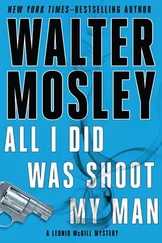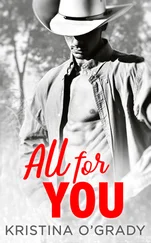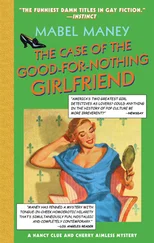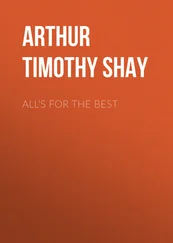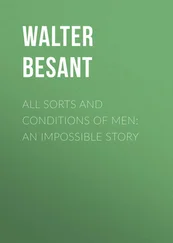When Peter was smaller, he had been found one day sleeping beside the gelding in the bay. That huge animal, who liked to push uninvited guests up against the fence.
Only the heavy farm carts and the old coach stood in the carriage house now. All the other implements and vehicles had been sold when the family parted with its landed estates.
The coach looked like one of the horse-drawn cabs in Berlin, with leather upholstery, and carbide lanterns in brass holders to left and right of the coachman’s box. The narrow wheels were covered with white rubber, and the little bridal wreath hung in the small, oval window. The coach belonged to the old inventory of the property, and had probably been there for ever, but the little wreath dated only from 1932. When the cousins from Albertsdorf came over and played hide-and-seek, Peter slipped into the coach and it took them ages to find him. Stay put and don’t move, that was the way to play the game.
Once Peter had shot at some crows with the air pistol. One of the birds dropped to the ground, but was still alive. It flapped its wings and went on living, until at last it lay dead. Then Vladimir came out of the cowshed and looked long and gravely at the boy.
If you were going to kill something you had to do it properly. From time to time Vladimir came along with the axe, picked up a chicken, and one blow was enough to kill it. None of the chickens strode past their comrades to save their lives, like the legendary medieval privateer Störtebecker after his beheading; there was no saving anyone’s life here. Some time or other every chicken’s turn came, and the axe went chop-chop. The cat, who otherwise kept out of the way, came running at the sound; he knew it meant something for him. He had a rightful claim to the head of the fowl.
When Peter looked to see if the tree house in the oak was still in good order and wondered whether to climb up to it and leave a stock of chopped turnips there, a farmer’s cart stopped in the road, and a little man jumped down. The man said goodbye to the farmer who had given him a lift, walked round the manor house and came in through the back door to the kitchen, where the maids were quarrelling again. When they saw him they stopped shouting, and stared at him in silence.
The man in his long coat seemed rather strange. But when he had unwound the scarf wrapped round his head, he looked perfectly normal, indeed smart. He laughed and asked the Ukrainian girls, ‘What are you shouting for? Surely things aren’t as bad as all that?’
Then he addressed them as ‘ladies’ and asked whether he could warm himself up a bit.
They cleared him a place at the kitchen table, and even gave him a mug of hot milk and a piece of bread and honey.
Where had he come from? the women asked. Where was he going? He asked in return where did they come from? Where were they going? And when Auntie came along, with a brooch on her pullover and wrist-warmers on her wrists — where had he come from? Where was he going? — he stood up, told her his name and said he was an artist, a painter, and added that it was wonderful to be allowed to warm himself here in this traditional old kitchen, you didn’t usually meet with such hospitality these days. To think he’d been offered milk and honey, he’d never known such a thing before. There was an almost biblical touch to it.
He came from Düsseldorf, he said, and he had been travelling through the German provinces for months, drawing ‘what was left standing’, as he put it. The mayor of Mitkau had given him a friendly welcome and let him do as he liked in his town. And it had also been the mayor who directed him to the Georgenhof, with its finial in the shape of a spiked mace, the morning-star type, set high above the gable room, telling him that nice people lived there.
Where had all this come from? Where would it all end? That was the question.
When he heard that Auntie was from Silesia, he said he knew Silesia like the back of his hand. He had been occupied for the last two years illustrating that great work The German Provinces, drawing the provincial buildings still standing. It was supported by the Party, he explained, and he had three extensive portfolios ready in Düsseldorf. He had begun his work in Swabia, then he had gone along the Weser, and so to Thuringia. And Silesia too. All that was already on record, now it was the turn of East Prussia, in winter at that, but he was nearly finished. In the next few days he would continue his work with Allenstein, and then conclude it in Danzig.
He had been in Silesia a year and a half ago, in summer, when deep peace reigned there. All those pretty little churches. Where had all this come from? Where would it all end?
Königsberg was done for now, but he had turned to depicting that city and what remained of it. There was still a great deal he could put on record and he had been able to save so much for posterity. Burnt-out granaries, a flight of steps with a banister rail rising from the rubble, and of course the ruins of the cathedral and the castle. The British had done a thorough job, you couldn’t deny that. A lovely city, but finished now.
And he had just left the little town of Mitkau, which was on the defensive.
He had been arrested there! He had been asked what he was doing, shut up in a filthy cell with six other men, and not so much as a plate of soup. Just for drawing the tank barrier outside the Senthagener Tor. As if he were a spy. They had tried to confiscate his drawings, he said. There’d been a lot of telephoning. The mayor had rescued him, with many apologies, and had even given him an auxiliary police officer.
Fancy shutting him up like a spy. In a cell with six other men. And shady characters they were, at that.
In Mitkau he had been interested in the tower of St Mary’s Church from the south-east, a view not shown on any picture postcard. Pastor Brahms was an impressive man, a kind of Luther, but why hadn’t he let him in? Standing four-square outside the parsonage, not even inviting him inside. Asking, ‘What do you want?’ instead of being friendly and letting him into the parsonage. It was the fault of the pastors themselves if they lost their congregations.
Once inside the church — which otherwise was rather bleak and gloomy — he had sketched the capitals of a few columns and some finials, and then the amusing carving of Jonah with his funny whale. Was there a photo of it? he wondered. You couldn’t really draw something like that.
The artist had turned to the monastery as well, with its draughty cloisters and the refectory, crooked with age. Old people had been shuffling about in it, coughing and spitting. The refectory with its St Christopher and the cloisters.
He had drawn, from all sides, the marketplace with its uneven surface, the town hall and the cosy little houses round it. And the Smithy Inn, with its curving gable end. He didn’t think the big bridge so interesting; the old wooden bridge with the Dutch curve to its central section would have been a more attractive subject. But it had had to give way to modern times. He had sketched it only to please the auxiliary police officer.
He had noticed it when sketching the tricky subject of the Senthagener Tor, when he was drawing the tree trunks lying diagonally in front of it.
He showed Auntie the sketchbook, as if it were evidence of his industry, and she identified the Mitkau buildings without any difficulty. The town walls, the Senthagener Tor — he’d never seen anything like it before — and the monastery with the doddery old folk in the cloisters. Why, soon that sort of thing, she said, would be on a par with Rembrandt.
But the refectory? The St Christopher? The columns with their capitals? The finials? She wasn’t familiar with those. It had all been so different in her native Silesia. Much more appealing and cheerful than anything here.
Читать дальше

